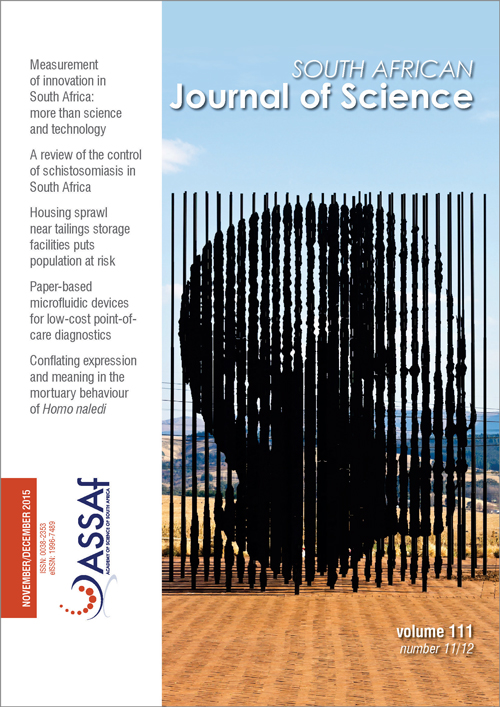Shark–Cetacean trophic interaction, Duinefontein, Koeberg, (5 Ma), South Africa
DOI:
https://doi.org/10.17159/sajs.2015/20140453Keywords:
baleen whale, odontocete, white shark, tooth marks, ZancleanAbstract
This study forms part of a larger project to reconstruct the Mio-Pliocene marine palaeoenvironment along South Africa’s west coast. It documents the shark–cetacean trophic interaction during the Zanclean (5 Ma) at Duinefontein (Koeberg). The damage described on the fragmentary cetacean bones was compared with similar damage observed on fossils from Langebaanweg, a Mio-Pliocene site on the west coast of South Africa, and data present in the literature. This comparison showed that the damage was the result of shark bites. The state of preservation makes it difficult to determine if the shark bite marks were the cause of death or as a result of scavenging. The presence of the bite marks on the bone would, however, indicate some degree of skeletonisation. Bite marks on some cranial fragments would suggest that the cetacean’s body was in an inverted position typical of a floating carcass. The preservation of the material suggests that the bones were exposed to wave action resulting in their fragmentation as well as abrasion, polishing and rolling. It also suggests that the cetacean skeletons were exposed for a long time prior to burial. The morphology of the bites suggests that the damage was inflicted by sharks with serrated and unserrated teeth. Shark teeth collected from the deposit include megalodon (Carcharodon megalodon), white (Carcharodon carcharias) as well as mako (Isurus sp. and Cosmopolitodus hastalis) sharks, making these sharks the most likely predators/scavengers.
Published
Issue
Section
License

All articles are published under a Creative Commons Attribution 4.0 International Licence
Copyright is retained by the authors. Readers are welcome to reproduce, share and adapt the content without permission provided the source is attributed.
Disclaimer: The publisher and editors accept no responsibility for statements made by the authors
How to Cite
- Abstract 599
- PDF 559
- EPUB 201
- XML 227













.png)